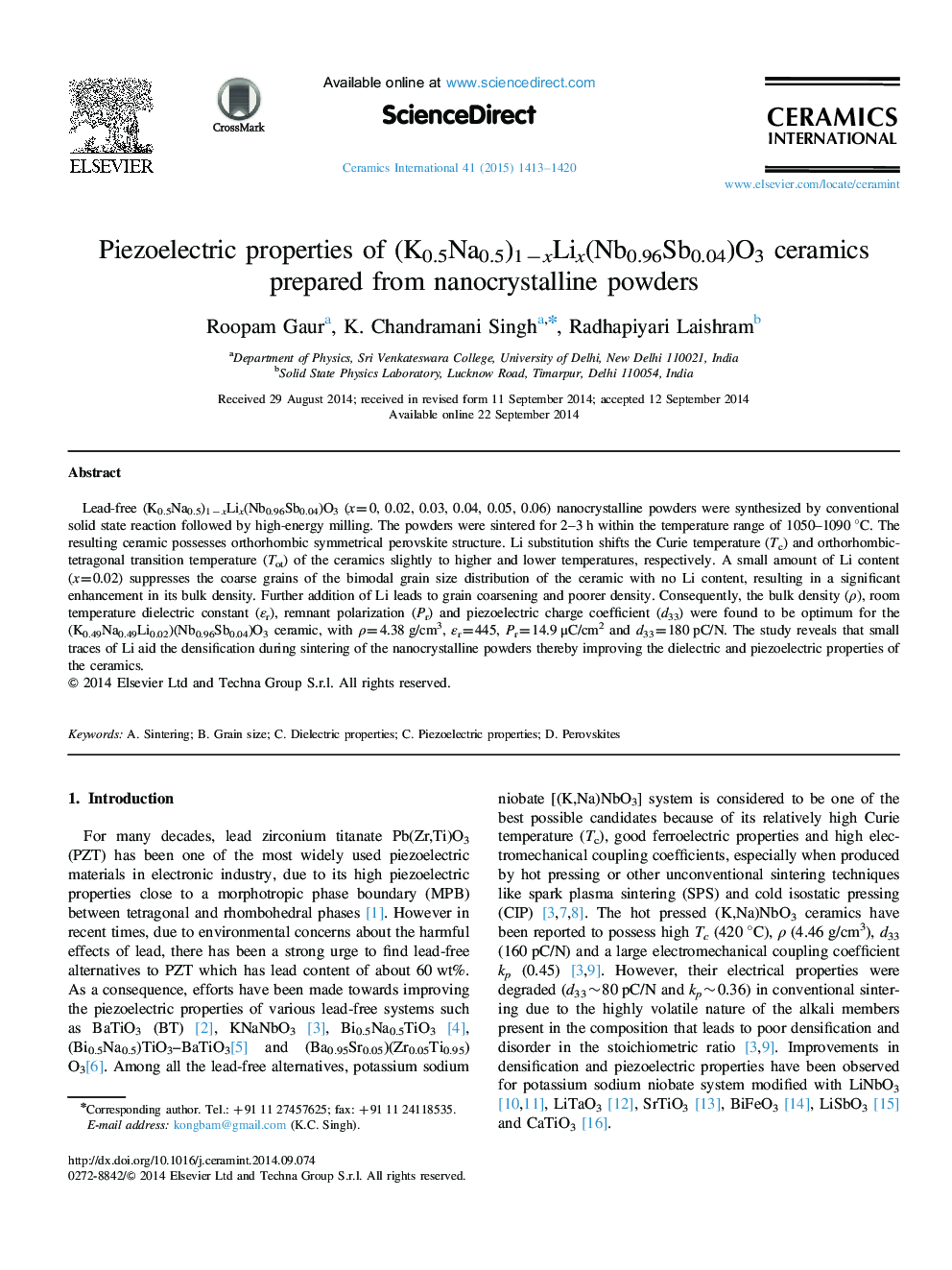| Article ID | Journal | Published Year | Pages | File Type |
|---|---|---|---|---|
| 1460843 | Ceramics International | 2015 | 8 Pages |
Lead-free (K0.5Na0.5)1−xLix(Nb0.96Sb0.04)O3 (x=0, 0.02, 0.03, 0.04, 0.05, 0.06) nanocrystalline powders were synthesized by conventional solid state reaction followed by high-energy milling. The powders were sintered for 2–3 h within the temperature range of 1050–1090 °C. The resulting ceramic possesses orthorhombic symmetrical perovskite structure. Li substitution shifts the Curie temperature (Tc) and orthorhombic-tetragonal transition temperature (Tot) of the ceramics slightly to higher and lower temperatures, respectively. A small amount of Li content (x=0.02) suppresses the coarse grains of the bimodal grain size distribution of the ceramic with no Li content, resulting in a significant enhancement in its bulk density. Further addition of Li leads to grain coarsening and poorer density. Consequently, the bulk density (ρ), room temperature dielectric constant (εr), remnant polarization (Pr) and piezoelectric charge coefficient (d33) were found to be optimum for the (K0.49Na0.49Li0.02)(Nb0.96Sb0.04)O3 ceramic, with ρ=4.38 g/cm3, εr=445, Pr=14.9 μC/cm2 and d33=180 pC/N. The study reveals that small traces of Li aid the densification during sintering of the nanocrystalline powders thereby improving the dielectric and piezoelectric properties of the ceramics.
